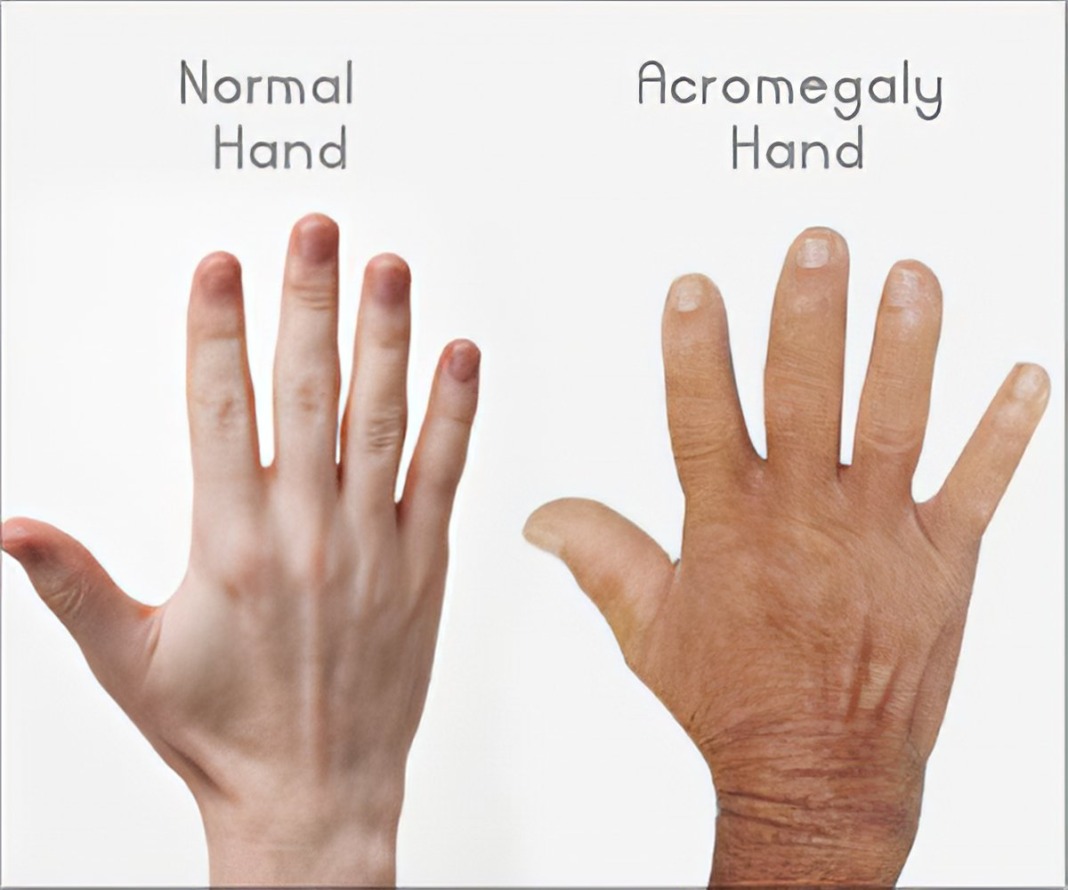Acromegaly is a rare hormonal disorder that results from the excess production of growth hormones by the pituitary gland. The excess growth hormone (GH) causes excessive growth in soft tissues and bones, and children with the condition can have abnormal heights and bone structures, especially in the arms, face and legs.
Acromegaly is not common, so the physical changes are not easily noticed; they occur slowly over the years. If the condition is left untreated, it can lead to severe and life-threatening health problems.
Causes
Acromegaly occurs when the human pituitary gland in the brain produces too much growth hormone over time. The growth hormone is responsible for the growth and development of the body, and it is produced in a small gland at the base of the brain called the pituitary gland.
According to research, most cases of acromegaly in adults are caused by pituitary benign tumours (adenoma). The tumour produces excess growth hormone, and some of the symptoms of acromegaly, like blurred vision and headache, are due to the pressing of nearby brain tissues by the tumour.
However, a few cases of acromegaly are not caused by pituitary tumours; they are caused by a tumour in other parts of the body, like the pancreas or the lungs. In this case, the tumour produces an excess amount of growth hormone-releasing hormone (GH-RH), which causes the pituitary gland to release growth hormone even when it isn’t needed by the body.
Symptoms of Acromegaly
Acromegaly symptoms aren’t easy to detect because they develop slowly over the years. However, some common symptoms you can look out for are:
- Excessive hair growth in women.
- A prominent brow.
- Enlarged bones in the feet, face, and hands.
- Weight gain.
- Spaces between the teeth.
- An enlarged jaw or tongue.
- Excessive growth spurts.
- Swollen and painful joints that limit movement.
- Muscle weakness.
- Splayed fingers and toes.
- Fatigue.
- A hoarse, deep voice.
- An inability to sleep.
- Thickened skin.
- Profuse sweating.
- Body odour.
- Enlarged sebaceous glands.
- Headaches.
- Skin tags, which are noncancerous growths.
You should see a doctor if you’ve noticed some or all of these symptoms.
Treatment
Treatment options for acromegaly are based on your overall health and age; they include surgery to remove the tumour causing the excess production of growth hormones, whether in the brain or other parts of the body.
Medication is also a healthy option for treating acromegaly; there are drugs that reduce GH levels in the body and shrink large tumours before surgery. Then, radiation can be used to remove sections of tumours left after surgery or when medications aren’t enough.



